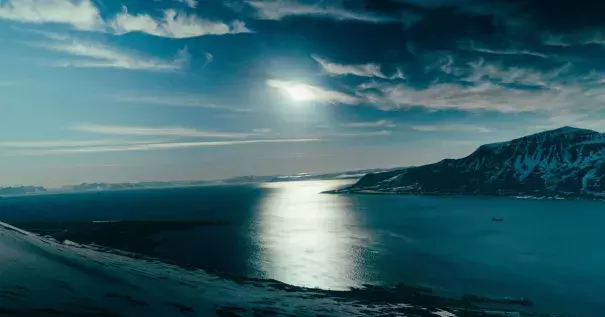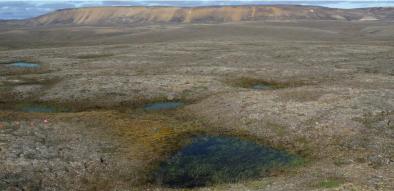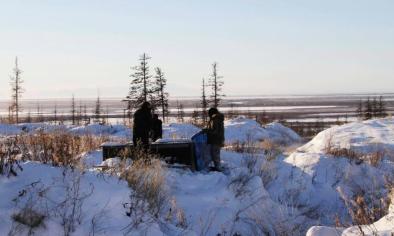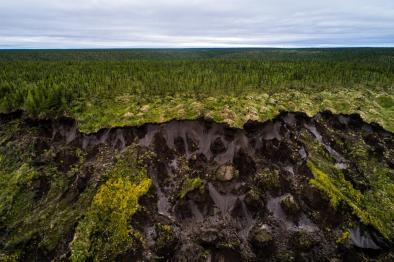Melting permafrost in the Arctic is unlocking diseases and warping the landscape

Permafrost is a layer of frozen soil that covers 25 percent of the Northern Hemisphere. It acts like a giant freezer, keeping microbes, carbon, and soil locked in place.
...
A recent Arctic Council report says that 20 percent of the permafrost near the surface may melt by 2040. Already scientists have noticed permafrost temperatures slowly climbing. “In the 1980s, the temperature of permafrost in Alaska, Russia and other Arctic regions averaged to be almost 18°F,” the U.S. Geological Survey explained in 2015. “Now the average is just over 28°F.”
A 2010 study in Russia found 0.5°C to 2°C of permafrost warming in the past three decades, bringing some locations dangerously close to thawing and pushing the boundary of permafrost regions ever northward. And the depth of the “active layer” — the top layer of permafrost that thaws in the summertime — is growing deeper in the Arctic regions north of Europe, a sign of instability.
...
The simplest definition of permafrost is ground that has been frozen for at least two years.
But it’s so much more than that. In much of the Arctic, that ground has been frozen for tens of thousands of years. And a huge amount of it is frozen — permafrost rests in 25 percent of all the land area in the Northern Hemisphere.
...
Permafrost is like the bedrock of the Arctic (you literally need jackhammers to break it apart). But rising air temperatures in the region are chipping away at this bedrock.
“Half the volume of permafrost may be frozen water,” Holmes says. “When that thaws, the water just runs off. The water may head downhill or the water has a lower volume than is ice, so the ground just slumps and kind of falls apart.”
...
You can think of the Arctic permafrost as a giant kitchen freezer.
If you put organic (carbon-based) matter in your freezer, the food will stay intact. But if the freezer compressor breaks, it will slowly heat up. As it heats up, bacteria begin to eat your food. The bacteria make the food go rotten. And as the bacteria consume the food, they produce carbon dioxide, methane, and other gases and chemicals that smell terrible.
For tens of thousands of years, permafrost has acted like a freezer, keeping 1,400 gigatons (billion tons) of plant matter carbon trapped in the soil. (That’s more than double the amount of carbon currently in the atmosphere.) Some of the plant matter is more recent, and some is from glacial ice ages that radically transformed a lush landscape into a tundra.
“Plants are growing in permafrost regions, and when those plants die, because of the cold temperature, they don't fully decompose, so some of that organic carbon is left behind,” Holmes says. When the permafrost thaws, “it starts to rot, it starts to decompose, and that's what's releasing carbon dioxide and methane,” he says.
This is one reason scientists are so worried about a melting Arctic: When the bacteria turn the carbon in the Arctic into C02 and methane, it accelerates a feedback loop. The more methane and carbon released, the more warming. The more warming ... you get it.
...
[T]he deep freeze of the permafrost doesn’t just keep carbon from escaping — it keeps microbes intact as well...All the bacteria need is a thaw to wake back up. “If you take a yogurt and put it in permafrost [that remains frozen], I’m sure in 10,000 years from now it still will be good to eat,” he said... These microbes are like time travelers — and they could thrive waking up in an age when humans have lost an immune defense against them.
Related Content





